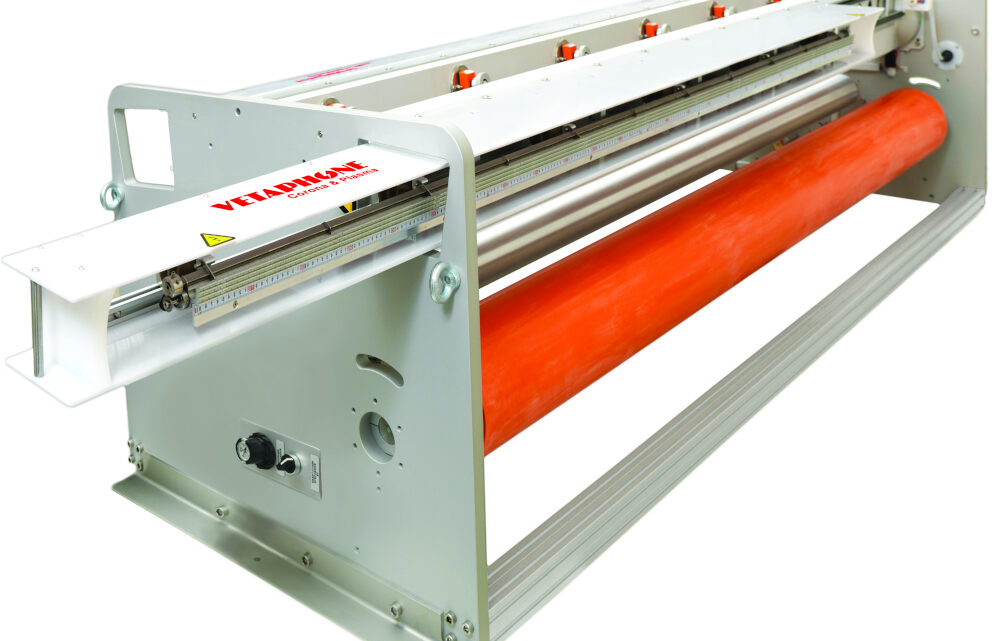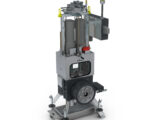
Surface Treatment and Extrusion
October 17, 2022It all begins with the simple fact that plastic film is non-absorbent. Also irrefutable, is that plastic film has become an integral part of our daily life, especially in packaging where it is printed, laminated, and converted. And this is where surface treatment plays a vital part. By changing the chemical construction of the surface layer, ink, lacquer, or any other liquid will adhere to the plastic.
‘Adherence’ and ‘adhesion’ are terms that frequently appear in any text relating to filmic substrates and their ability to be printed, coated, and laminated. The issue relates to striking a balance between the surface energy of the liquid and the solid to which it is being applied. A mismatch results in poor adhesion, which is the reason that controllable corona treatment is essential for consistent performance.
Controlled corona
By applying a carefully controlled electronic discharge at close range to the plastic film, the chemical make-up of its surface layer is changed by breaking down the long molecule chains which then allows the liquid to adhere. By increasing the surface energy of the plastic film, which is measured in dynes, it is possible to perform a range of different printing and converting processes that would otherwise prove impossible. And, this process of surface treatment starts at the very beginning of plastic film manufacture, when it is extruded.
But, like most industrial processes, it is not straightforward. Different plastic film formulations have different dyne values and different processes demand different dyne levels to be successful. For example, materials like PP, PE-LD, PE-HD, and BOPP have a native dyne value from 29 to 32. Equally, dyne levels required for printing with solvent-based or water-based inks, or coating or laminating vary from 40 – 42 at the low end to 46 – 56 at the high end.
And it all starts with the extrusion process, which can raise dyne levels from 32 to 52 or more, whereas after extrusion, the polymer chains take 48 – 72 hours to post-crystallise, with additives like slip agents and those for anti-fogging migrating back to the surface and in turn affecting the adhesion level.
Securing correct treatment at extrusion is vital for two reasons: first, because dyne levels decline over time – typically 4 – 6 dynes over a period of 2 – 3 weeks before stabilising; and second, because subsequent ‘boost’ or ‘bump’ treatment may be required later, depending on the intended process, and this may not be possible if corona treatment during extrusion was poor.
The Blown film process
If we now look at the methods of extrusion, we see there are two distinct and separate types: Blown film and Cast film. In the Blown process the film is extruded vertically and wound into one flat tubular or two reels that are then converted by printing/coating/sealing into the final packaging product. The corona station is normally located at the top where the flattened tubular film is treated on the outside only. It is then split in two and can be fully treated again, or only on the inside, before being wound onto reels. On some extruders, the winder operates in both directions, so just one double-sided corona treater can be used.
The reels are then passed through a converting process where the welding takes place, and as corona treatment is notoriously the enemy of welding, because the oxidation generated by the corona process weakens the welding area, it is important to evaluate the likely effect in each case.
Blown extrusion is typically used for PE based materials. Product applications include pallet hoods, collation shrink film, stretch hoods, lamination film, deep freeze film, heavy duty film, protective film, and food packaging film. These are single layer up to normally 3 layers but can be up to 11 layers in the case of food packaging film.
The Cast film process
In the Cast film process, the substrate is produced from a flat die and wound as a single film after being side trimmed. Because the edges of the Cast film are thicker than the rest of the web they need to be cut off before entering the corona station and winder to prevent any damage to the rubberised rollers.
Cast film extruders have a higher capacity and faster running speed that their blown film counterparts, so they need a higher power corona treater to achieve the best results. This typically means a single-sided treater with an extended shaft, which can be motorised, and has a nip roller to prevent treatment to the reverse of the web. Usually, the corona unit is used as a pull station.
Cast Polypropylene, normally called CPP and different to stretch film, is used for a wide range of packaging, and normally requires corona treatment.
How can I ensure I get it right?
There are certainly few simple answers and a definite need for specialist knowledge to ensure the best results are obtained. As substrates become more complex to meet new packaging and safety criteria, the need for a detailed understanding of the surface treatment process and what it can offer becomes ever more important.
With more than 70 years of experience and research data, Vetaphone is unrivalled in its ability to advise, educate and assist production personnel at every stage where surface treatment technology is required. Often misunderstood, it is a process that if managed correctly pays dividends throughout downstream processing from the moment of extrusion.
